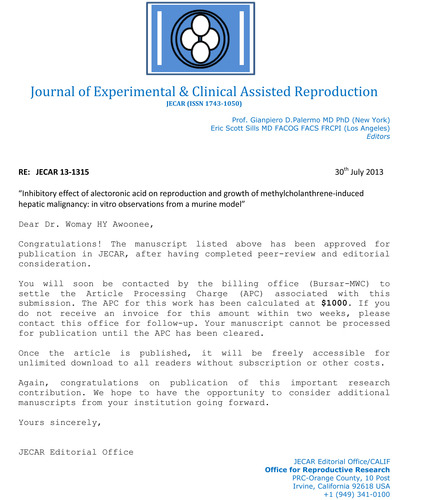“Sting Operation” Finds That Many Online Journals Will Publish Fake Papers, For
“Sting Operation” Finds That Many Online Journals Will Publish Fake Papers, For A Fee The business model of these “predatory publishers” is a scientific version of those phishes from Nigerians who want help transferring a few million dollars into your bank account. To find out just how common predatory publishing is, Science contributor John Bohannon sent a deliberately faked research article 305 times to online journals. More than half the journals that supposedly reviewed the fake paper accepted it. “This sting operation,” Bohannan writes, reveals “the contours of an emerging Wild West in academic publishing.” Online scientific journals are springing up at a great rate. There are thousands out there. Many, such as PLoS One, are totally respectable. This “open access” model is making good science more accessible than ever before, without making users pay the hefty subscription fees of traditional print journals. (It should be noted that Science is among these legacy print journals, charging subscription fees and putting much of its online content behind a pay wall.) But the Internet has also opened the door to clever imitators who collect fees from scientists eager to get published. “It’s the equivalent of paying someone to publish your work on their blog,” Bohannan tells Shots. These sleazy journals often look legitimate. They bear titles like the American Journal of Polymer Science that closely resemble titles of respected journals. Their mastheads often contain the names of respectable-looking experts. But often it’s all but impossible to tell who’s really behind them or even where in the world they’re located. Continue reading. The image above shows a letter from a journal offering to publish a fake cancer research paper for a $1,000 fee. -- source link
Tumblr Blog : nprglobalhealth.tumblr.com
#science#publishing
